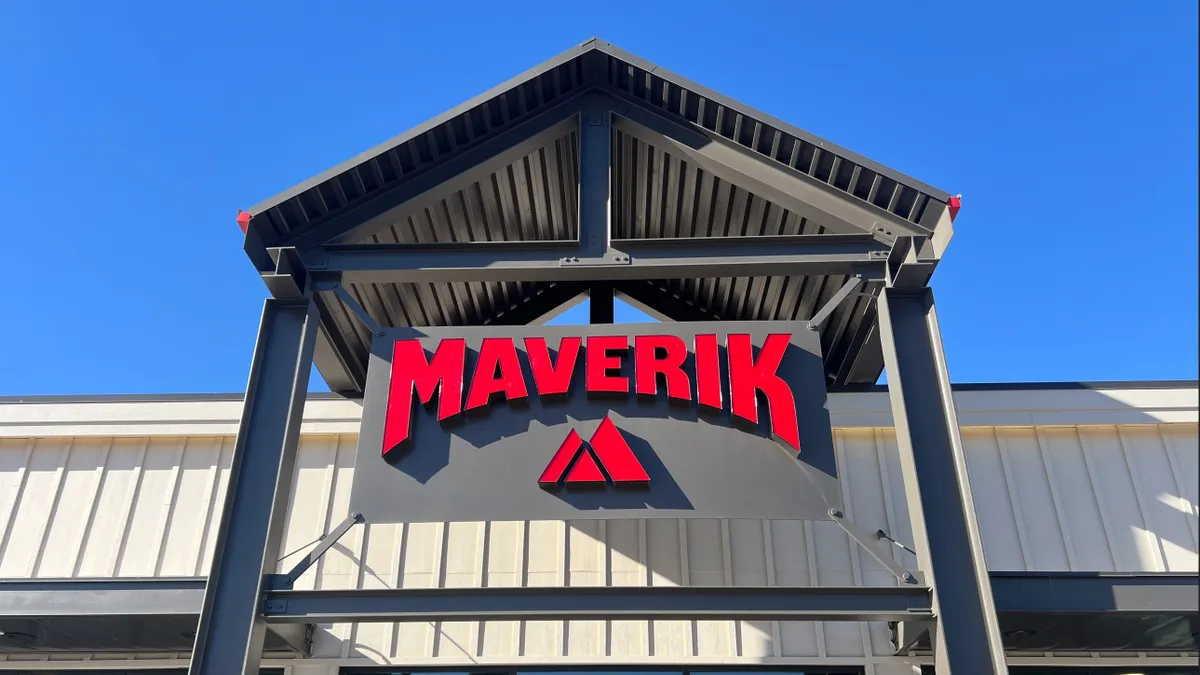The average consumer spends about four minutes at the pump fueling their vehicle. Those are critical moments for fuel and convenience retailers to grab consumers’ attention and drive them into the store for snacks, beverages and other impulse buys. This window of time is also an effective touch point for building brand recognition and loyalty that will encourage a retailer’s customers to come back again and again.
C-store retailers collectively generated $327.6B of total inside sales. While fuel pump screens are commonplace, not all fuel and convenience retailers fill them with video content to engage customers and capitalize on those four minutes of undivided attention while they fuel up.
“With discounts and other promotional offers influencing 64% of shoppers to buy in the convenience store, retail media plays an important role in driving c-store sales,” said Dan Trotzer, EVP, Industry for GSTV, an on-the-go video network.
Here’s how you can use your screens to deliver the messages that drive consumers into your store and boost your profitability.
Move beyond ads
When forecourt screens first hit the market, the strategy was to simply fill them with advertising. The mantra, “Customers are tethered to the dispenser with a six-foot hose; what else are they going to do?” prioritized exposure.
“While that may be true, it’s taking for granted the consumer’s attention, and we don’t want to do that,” Trotzer said.
In an eye-tracking attention study conducted by Lumen Research, despite shorter ad durations, ads on GSTV far exceed industry benchmarks for attentive seconds per 1,000 impressions and elevated consumer brand recall post-viewing.
Why? Because the content prioritizes customers.
“We want to value the time we have with consumers standing there and make it more than just an exposed experience,” Trotzer said.
Consumers have many fueling stations to choose from, and you want to be sure they frequent yours. Showing snackable, fun, engaging content can influence their decision-making process for visiting one station over another.
“There is a tremendous opportunity to engage the customer and create an experience they want to come back for,” said Elaine Kanak, chief marketing officer for Invenco by GVR, a retail payment and technology platform for convenience retailers. “When you think about branded content, not just advertisements, but infotainment that relates to your brand or geography, you can deepen that relationship with your customer.”
3 Tips to drive business outcomes
Trotzer noted that the qualitative aspect of consumer experiences is important, but ultimately, the content must turn attention into business outcomes. Forecourt screen displays must drive people into the store, influence their decision-making and persuade them to make a purchase.
Fuel retailers can maximize the potential to drive in-store purchases with these three tips:
1. Activate forecourt screens. It sounds simple, but countless screens at stations today are inactive.
“I am not saying it’s always just a super simple thing, but it’s something that is typically a resolvable issue,” Trotzer said. “Then, once it’s on, understand what you want to achieve through the content.”
2. Be strategic about content. Think about the products most relevant to the time of day, day of the week, the season and time of year.
“For the content to be effective, you must keep it from getting stale,” he added. “For example, yYou don’t want to have a message about purchasing last-minute Thanksgiving meal add-ons in the middle of December,” he added.
3. Make it simple to act. Display QR codes so it is easy to scan and enroll in loyalty programs. Highlight discounts, food service, and new products available in-store. Better yet, make it easy to purchase food by paying for it at the pump so that the order is ready for pick up once fueling is complete, Kanak suggested.
Know what you’re signing up for
The number of retail media network providers has increased exponentially in recent years. Before signing a contract, ask about the provider’s experience, capabilities and proof of outcomes.
“Retail media is relatively new when you look at it from the broader perspective and landscape of media,” Trotzer said. “But there are companies who have been doing this work for a long time and those jumping in just to take advantage of a trend. I would encourage retailers to ask questions about a retail media network provider’s outcomes.”
Kanak also recommends asking about the level of support provided, how much airtime your content will receive, and the nature of the other content shown.
“You want to make sure any content is reflective of your values as a brand,” she said. “You also want a turnkey solution that will give you a consistent customer experience across your estate. We recently launched a new EV charging solution, Konect, which will have the same unified payment and media experience as our fuel dispensers.”
While big box stores and grocers are currently garnering the most attention in the conversation about retail media networks, businesses in the fuel and convenience space hold the most potential.
“The fuel and convenience space overall, if aggregated, is significantly larger than any of those major retail media networks that are being written about or talked about,” Trotzer said. “From that perspective, fuel and convenience screens are probably one of the most valuable retail media networks and a turnkey solution that makes your marketing dollars work harder.”










